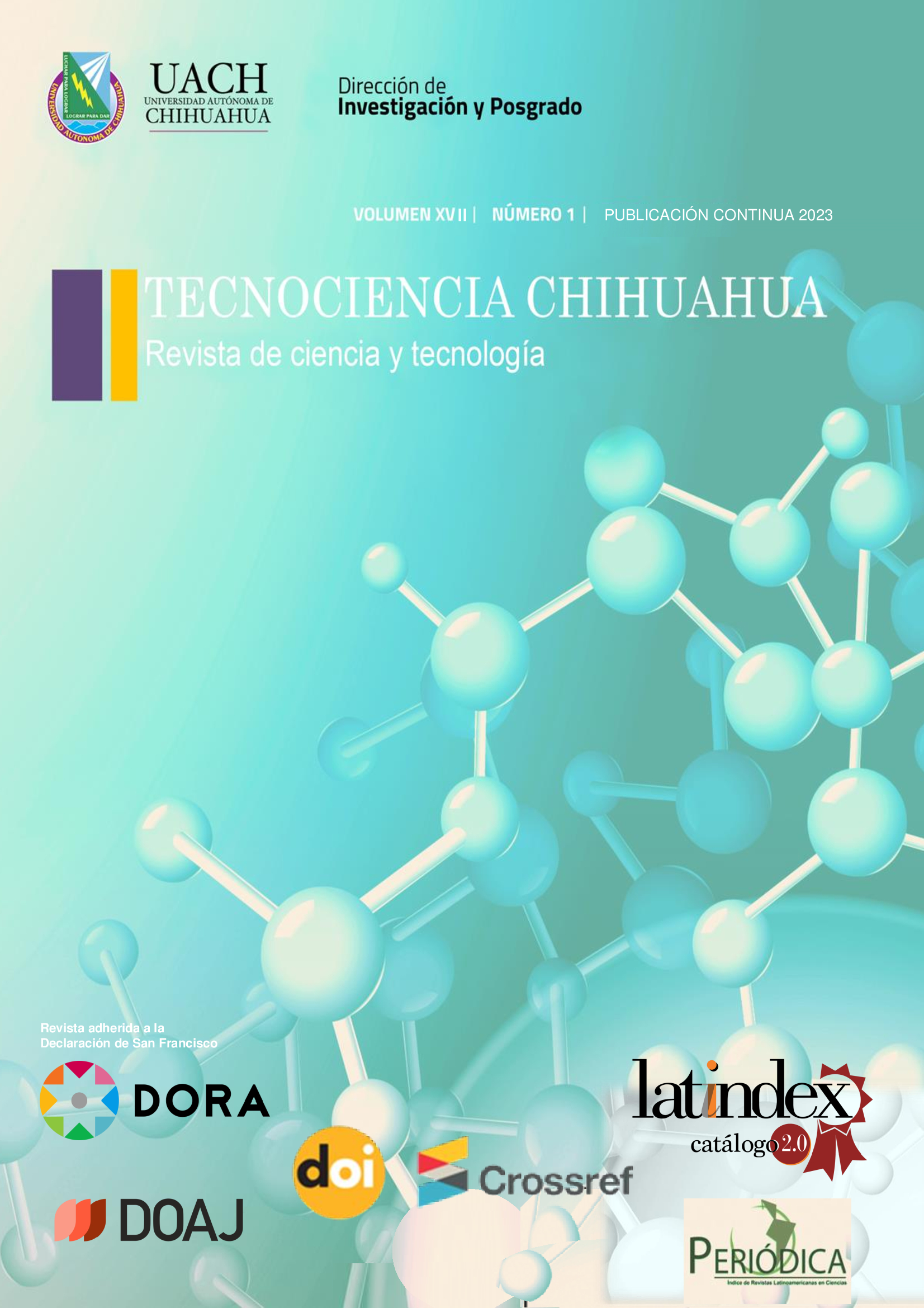Geles covalentes de arabinoxilanos ferulados inducidos con lacasa o peroxidasa: estructuras de entrecruzamiento, características reológicas y actividad antioxidante
Covalent gels of ferulated arabinoxylans induced with laccase or peroxidase: cross-linking structures, rheological characteristics and antioxidant activity
Resumen
Los arabinoxilanos ferulados (AX) forman geles covalentes por acoplamiento oxidativo del ácido ferúlico (AF) generando dímeros (di-AF) y trímeros de AF como estructuras de entrecruzamiento. En esta investigación se estudió el efecto de la gelificación de AX inducida con lacasa o peroxidasa, sobre las estructuras de entrecruzamiento, las características reológicas y la actividad antioxidante de los geles desarrollados. Los geles de AX al 2 % (p/v) formados con peroxidasa registraron valores mayores de di-AF (0.195 µg/g) y módulo elástico (94 Pa) respecto a los obtenidos con lacasa (0.153 µg/g y 79 Pa, respectivamente). Además, los geles inducidos con peroxidasa presentaron mayor actividad antioxidante (13.21 y 3.3 µmol de TEAC/g muestra por método ABTS+ y DPPH, respectivamente) en relación con los generados con lacasa (9.63 y 3.0 µmol de TEAC/g muestra por método ABTS+ y DPPH, respectivamente), lo cual podría atribuirse al mayor contenido de di-AF 8-5’ y 5-5´. Es posible que las diferencias entre estos geles estén relacionadas con el mecanismo de acción de las enzimas utilizadas. La lacasa oxida directamente al AF en AX mientras que, con peroxidasa, el H2O2 realiza esta acción y, por su bajo peso molecular, podría acceder más fácilmente al AF del polisacárido, favoreciendo su entrecruzamiento.
Citas
Barron C. &X. Rouau. 2008. FTIR and Raman Signatures of Wheat Grain Peripheral Tissues. Cereal Chemistry 85, 619-625. https://doi.org/10.1094/CCHEM-85-5-0619
Carvajal-Millan E., A Rascón-Chu., J. Márquez-Escalante, N.Ponce de León, V. Micard & A. Gardea. 2007. Maize bran gum: extraction, characterization and functional properties. Carbohydr. Polym. 69(2): 280-285. https://doi.org/10.1016/j.carbpol.2006.10.006
De Anda-Flores Y., E. Carvajal-Millan, J. Lizardi-Mendoza, A. Rascon-Chu, A.L. Martínez-López, J. Marquez-Escalante, F.Brown-Bojorquez & J. Tanori-Cordova. 2020. Covalently crosslinked nanoparticles based on ferulated arabinoxylans recovered from a distiller’s dried grains byproduct. Processes 8(6), 691-705; https://doi.org/10.3390/pr8060691
Fierro Islas J.M., E. Carvajal Millán, A.C. Campa Mada, J.A. Márquez Escalante & A. Rascón Chu. 2018. El subproducto del bioetanol de maíz como fuente de arabinoxilanos para la industria alimentaria. Industria Alimentaria 40(6), 34-43. https://issuu.com/alfaeditorestecnicos/docs/industria_alimentaria_noviembre-dic_8c7ac60a927c70
González-Estrada R., M. Calderón-Santoyo, E. Carvajal-Millan, F.D.J.A., Valle, J.A. Ragazzo-Sánchez, F. Brown-Bojorquez & A. Rascón-Chu. 2015. Covalently cross-linked arabinoxylans films for Debaryomyces hansenii entrapment. Molecules 20 (6), 11373-11386. https://doi.org/10.3390/molecules200611373
Hatfield R.D. & J. Ralph. 1999. Modelling the feasibility of intramolecular dehydrodiferulate formation in grass walls. J. Sci. Food Agric. 79: 425–427. https://doi.org/10.1002/(SICI)1097-0010(19990301)
Jia Y., Y. He & F. Lu. 2018. The structure-antioxidant activity relationship of dehydrodiferulates. Food Chem. 269:480–485. https://doi.org/10.1016/j.foodchem.2018.07.038
Kacurakova M., N. Wellner, A. Ebringerova, Z. Hromadkova, R. H. Wilson & P.S. Belton. 1999. Characterisation of xylan-type polysaccharides and associated cell wall components by FT-IR and FT-Raman spectroscopies. Food Hydrocoll. 13:35-41. https://doi.org/10.1016/S0268-005X(98)00067-8
Knudsen K.E.B. & H.N. Lærke. 2010. REVIEW: Rye arabinoxylans: molecular structure, physicochemical properties and physiological effects in the gastrointestinal tract. Cereal Chem. 87: 353-362. https://doi.org/10.1094/CCHEM-87-4-0353
Malunga L.N. & T. Beta. 2015. Antioxidant capacity of water-extractable arabinoxylan from commercial barley, wheat, and wheat fractions. Cereal Chem. 92(1):29-36. https://doi.org/10.1094/CCHEM-11-13-0247-R
Marquez-Escalante J., E. Carvajal-Millan, Y.L. López-Franco, E.M. Valenzuela-Soto & A. Rascón-Chu .2018. Efecto prebiótico de los arabinoxilanos y los arabinoxilo-oligosacáridos y su relación con la promoción de la buena salud / Prebiotic effect of arabinoxylans and arabinoxylan-oligosaccharides and the relationship with good health promotion. CienciaUAT 13(1):146-164. https://doi.org/10.29059/cienciauat.v13i1.922
Marquez‐Escalante J.A. & E. Carvajal‐Millan 2019. Feruloylated arabinoxylans from maize distiller’s dried grains with solubles: effect of feruloyl esterase on their macromolecular characteristics, gelling, and antioxidant properties. Sustainability 11(22):6449-6461; https://doi.org/10.3390/su11226449
Martínez-López A.L., E. Carvajal-Millan, J. Marquez-Escalante, A.C. Campa-Mada, A. Rascón-Chu, Y.L. López-Franco & J. Lizardi-Mendoza. 2019. Enzymatic crosslinking of ferulated arabinoxylan: effect of laccase or peroxidase catalysis on the gel characteristics. Food Sci. Biotechnol. 28(2):311-318. https://doi.org/10.1007/s10068-018-0488-9
Melo-Silveira R. F., R. L. Silva-Viana, D. Araujo-Sabry, R. A Da Silva., D. Machado, A. K. Lima-Nascimento, K. Castanho-Scortecci., C.V. Ferreira-Halder, G. Lanzi-Sassaki. & H.A.Oliveira Rocha. 2019. Antiproliferative xylan from corn cobs induces apoptosis in tumor cells. Carbohydr. Polym. 210:245-253. https://doi.org/10.1016/j.carbpol.2019.01.073
Mendez-Encinas M.A., E. Carvajal-Millan, M.P. Yadav, Y.L.López-Franco, A. Rascon-Chu, J. Lizardi-Mendoza, F. Brown-Bojorquez, E. Silva-Campa & M. Pedroza-Montero. 2019a. Partial removal of protein associated with arabinoxylans: Impact on the viscoelasticity, crosslinking content, and microstructure of the gels formed. J. Appl. Polym. Sci. 136(15), 47300. https://doi.org/10.1002/app.47300
Mendez-Encinas M.A., E. Carvajal-Millan, A. Rascón-Chu, H. Astiazarán-García, D.E. Valencia-Rivera, F. Brown-Bojorquez, E. Alday & C. Velazquez. 2019b. Arabinoxylan-based particles: in vitro antioxidant capacity and cytotoxicity on a human colon cell line. Medicina 55 (7):349. https://doi.org/10.3390/medicina55070349
Mendez-Encinas M.A., E. Carvajal-Millan, A. Rascon-Chu, H. Astiazaran-García, & D.E. Valencia-Rivera. 2018. Ferulated Arabinoxylans and Their Gels: Functional Properties and Potential Application as Antioxidant and Anticancer Agent, Oxidative Medicine and Cellular Longevity. Article ID 2314759. https://doi.org/10.1155/2018/2314759 Izy
Mendis M., E. Leclerc & S. Simsek. 2016. Arabinoxylans, gut microbiota and immunity. Carbohydr. Polym. 139:159-166. https://doi.org/10.1016/j.carbpol.2015.11.068
Niño-Medina G., E. Carvajal-Millán, A. Rascon-Chu, J.A. Marquez-Escalante, V. Guerrero & E. Salas-Muñoz. 2010. Feruloylated arabinoxylans and arabinoxylan gels : structure, sources and applications. Phytochem Rev. 9 : 111–120. https://doi.org/10.1007/s11101-009-9147-3
Re R., Pellegrini N., A. Proteggente, A. Pannala, M. Yang & C. Rice-Evans. 1999. Antioxidant activity applying an improved ABTS radical cation decolorization assay. Free Radic. Biol. Med. 26(9 10):1231-1237. https://doi.org/10.1016/S0891-5849(98)00315-3
Rosa N. N., C. Barron, C. Gaiani, C. Dufour & V.J. Micard. 2013. Ultra-fine grinding increases the antioxidant capacity of wheat bran. J. Cereal Sci. 57(1):84-90. https://doi.org/10.1016/j.jcs.2012.10.002
Vogel B., D.D: Gallaher & M. Bunzel. 2012. Influence of crosslinked arabinoxylans on the postprandial blood glucose response in rats. J. Agric. Food Chem. 60(15):3847-3852. https://doi.org/10.1021/jf203930a
Vansteenkiste E., C .Babot, X. Rouau & V. Micard. 2004. Oxidative gelation of feruloylated arabinoxylan as affected by protein. Influence on protein enzymatic hydrolysis. Food Hydrocolloids, 18(4):557-564. doi: https://doi.org/10.1016/j.foodhyd.2003.09.004
Derechos de autor 2023 TECNOCIENCIA Chihuahua

Esta obra está bajo licencia internacional Creative Commons Reconocimiento-NoComercial 4.0.









